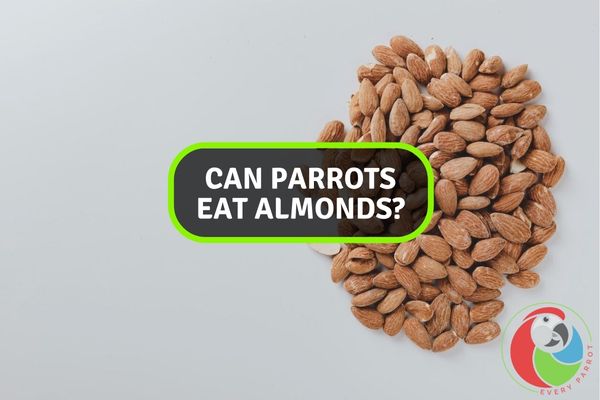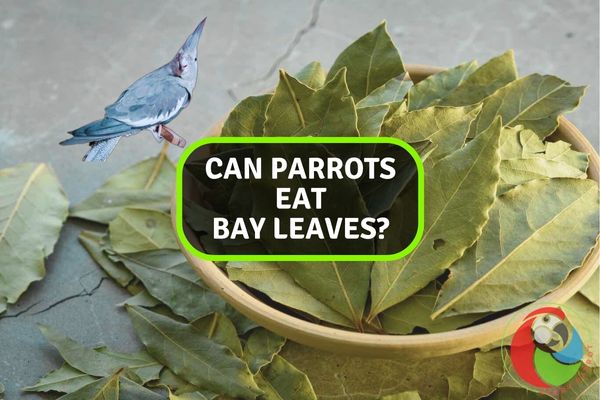Can Parrots Indulge in Jello Delight? Find Out Here
The jiggly, fruity, sweet flavors of jello may catch the eye of our inquisitive feathered friends. With their naturally bright colors and fun, wobbly texture, jello desserts certainly seem appealing as potential treats for our parrots.
But is jello actually a safe and healthy option to offer parrots? Let’s take a closer look at what jello is made of and how it may impact our birds.
Can You Feed Jello to Your Parrots?
In moderation, store-bought Jell-O can be an occasional snack for parrots. Look for all-natural brands without artificial sweeteners. The small serving size prevents excess sugar. Rinse pre-made Jell-O to remove excess dye. Introduce slowly and monitor for signs of sensitivity or diarrhea.
What is Jello Made Of?
Jello is a sweetened gelatin dessert that comes in a powdered mix. To prepare jello, the dry powder containing gelatin, flavorings, and colors is dissolved in hot water. As the liquid cools, the gelatin causes it to solidify into a soft, jelly-like consistency. Additional ingredients like fruit or whipped cream can be mixed in for extra flavor and texture.
Gelatin itself is a protein extracted from collagen, typically sourced from the bones, hooves, and connective tissues of cows and pigs. Vegetarian alternatives use plant-based gums like pectin or carrageenan instead of animal gelatin. Here is an overview of standard jello ingredients:
- Gelatin – Provides the characteristic jiggly texture
- Sugar – Makes jello sweet; usually corn syrup or cane sugar
- Food coloring – Gives bright, vibrant colors
- Natural and artificial flavors – Imitates fruit flavors like strawberry, orange, etc.
- Citric acid – Adds tartness
- Preservatives – Potassium sorbate, sodium hexametaphosphate
These ingredients allow jello to deliver its distinctive brightly-hued, soft, sweet, and fruity taste. But some components may be problematic for parrots when consumed regularly.

Concerns with Jello Ingredients for Parrots
Here are some potential issues with common jello ingredients in relation to parrot nutrition and health:
- Refined sugars – Too much can cause blood sugar spikes, weight gain, and fatty liver disease in birds.
- Artificial flavors/colors – Made from chemicals that provide no nutritional value. Natural options are preferable.
- Gelatin – Difficult to digest and lacks nutrients birds need. Consider vegetarian gums instead.
- Lack of nutrients – Jello contains no protein, essential fatty acids, or micronutrients parrots require.
Risks of Feeding Jello to Parrots
Here are some potential risks that may arise from frequently feeding jello to parrots:
- Obesity – Jello is high in sugar but low in nutrients. Overconsumption can lead to excess weight gain.
- Nutritional deficiencies – Jello lacks the vitamins, minerals, amino acids, and fats parrots need to stay healthy. Relying too much on jello could cause deficiencies over time.
- Digestive upset – Gelatin and artificial sweeteners may be difficult for some parrots to digest properly. Diarrhea or vomiting could occur.
- Toxicity – Some artificial colorings used in jello have been linked to organ damage in animal studies. Better to avoid them.
- Behavior issues – Excess sugar may make some parrots hyperactive or aggressive.
Because jello itself offers minimal nutritional value, it should only be an occasional treat in tiny portions.
Healthier Jello Alternatives for Parrots
Rather than packaged jello, parrots benefit more from homemade “jello” using ingredients that provide actual nutrition. Here are some healthier ideas:
- Diced fruit suspended in natural fruit juice that gels in the fridge
- Pureed veggies like pumpkin or sweet potato mixed with a vegetarian gum like agar or guar gum to gel
- Low-sugar gelatin made with all-natural coloring from fruits and veggies
- Coconut milk pudding sweetened with a touch of maple syrup or fruit puree
- Chia seeds or flax seeds soaked in water create a mildly sweet, nutrient-rich gel
The Jello Debate: Arguments For and Against Feeding It to Parrots
The question of whether parrots can safely eat jello prompts debate among avian nutrition experts. Here are some perspectives from both sides of the discussion:
Arguments Against Feeding Jello to Parrots
- Jello is pure sugar and calories without any redeeming nutrients. It offers no health benefits.
- Artificial colors and excess sugar can be harmful to birds. Natural, low-sugar options are healthier.
- Gelatin may be difficult for some parrots to digest and can cause crop slowdown.
- Fructose-based sweeteners in jello can cause liver issues if over-consumed.
- Jello takes the place of healthier foods in a parrot’s limited appetite.
- The flavored jello powder itself poses a risk if inhaled/ingested directly.
Arguments For Allowing Some Jello in Moderation
- A small taste of jello once in a while is not going to harm an otherwise well-balanced parrot.
- Many parrots enjoy the unique texture and flavors. Depriving them completely could lead to behavioral issues.
- Homemade jello with natural colors/sweeteners has fewer concerns than artificial commercial jello.
- Jello can be a way to introduce different fruit flavors and encourage product acceptance.
- Gelatin does have some protein value, though vegetables and grains offer better nutrition.
Overall, there are more compelling reasons to avoid or strictly limit jello for parrots. But a rare tiny treat may be acceptable for some parrots if their main diet is nutritionally sound.
Can Parrots Eat Gelatin?
As jello’s main ingredient, gelatin deserves special consideration regarding parrots. Pure gelatin without sugar or artificial flavors poses fewer concerns. But it still carries risks:
- Difficult to digest – can cause crop slowing
- Nutritionally deficient – lacks vitamins, minerals, antioxidants
- Filling without nutrition – displaces healthier foods
Vegetarian gums like agar or pectin make safer alternatives. If offering gelatin, limit to a teaspoon or two at most on occasion after first determining your parrot tolerates it well. Monitor for any signs of digestive upset. Never give gelatin frequently or in excess.

Jello Recipes for Parrots
When trying Jello with your parrot for the first time, begin with a tiny portion to gauge their reaction. Here are balanced recipe ideas:
- Fruit-Infused Jello: Dissolve a small amount of all-natural Jell-O powder with chopped mango, berries, or other fresh fruits. Provides nutrients along with sweetness.
- Yogurt Jello Parfaits: Layer a spoonful of plain yogurt with all-natural, rinsed Jell-O. The probiotics in yogurt support healthy digestion.
- Jell-O Fruit Skewers: Spear bite-sized pieces of fresh fruit onto skewers, then dip them into dissolved Jello. Coats fruit with a touch of sweetness.
- Veggie Jello Snacks: Suspend chopped vegetables like carrots and peppers in natural Jell-O for a fun texture and pop of color.
- Frozen Jello Treats: Pour liquid Jell-O into ice cube trays with fresh or dried fruits mixed in, then freeze. Provides cooling stimulation.
Conclusion
Traditional jello provides minimal nutritional value and poses some potential health risks, so it should not be a regular part of a parrot’s diet. But a rare, tiny taste of jello for some parrots is unlikely to cause harm, especially if the ingredients are natural and low in sugar.
The healthiest approach is focusing the majority of the diet on a wide variety of fruits, vegetables, whole grains, nuts, seeds, and lean proteins to meet all of a parrot’s nutritional needs. With smart moderation and emphasis on nutrition, parrot owners can occasionally indulge their bird’s interest in jello’s bright colors and unique texture while still supporting their excellent lifelong health.








